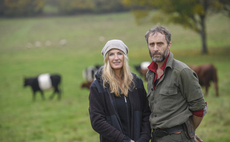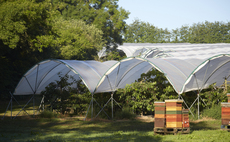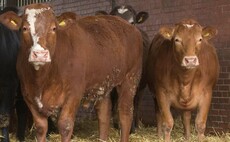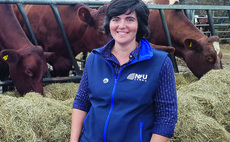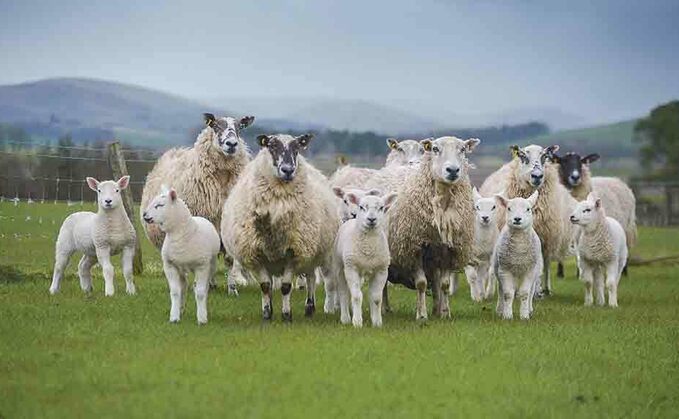
A quarter of all lamb losses are the result of abortion or stillbirth, yet the majority of breeding ewes in the UK remain open to infection by the two main disease agents causing these fatalities.
Lamb mortality remains an unnecessary welfare and economic cost to the UK sheep industry and up to 79 per cent of all losses occur between scanning and 48 hours of age.
Independent sheep vet and producer, Kate Hovers, says: "The two main causes of abortion and stillbirth in the UK are enzootic abortion (EAE) and toxoplasmosis, yet highly cost-effective vaccines are available to control losses caused by these diseases.
"With the challenges facing the sheep industry post Brexit and the need to reduce reliance on antibiotics, we will all need to up our game productivity-wise and, fortunately, we do already have the flock management tools available to help us improve our lamb production and profitability."
Ms Hovers explains that EAE is caused by the bacterium, Chlamydophila abortus, which tends to cause losses in the last few weeks of gestation.
She says: "It is highly contagious, so infected ewes should be isolated and antibiotic treatment is sometimes used to reduce the number of abortions during an outbreak. There is anecdotal evidence to suggest that in some areas blanket antibiotic therapy is used for all ewes in advance of lambing to try and prevent infectious abortion outbreaks which is against industry advice and should stop."
Ms Hovers adds that the benefits of antibiotic control for EAE are limited anyway. "The use of antibiotics will not prevent subsequent infections. Further use may be required year-on-year to limit EAE abortions, which is even more costly and certainly not desirable when effective vaccines are available," she says.
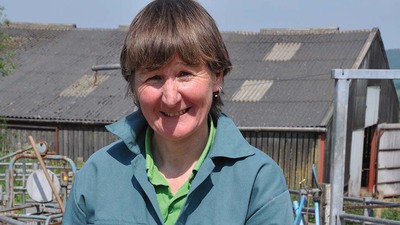
Controlling toxoplasmosis
Toxoplasmosis is exclusively an environmental disease challenge, Ms Hovers points out. "Unlike EAE it cannot be spread from sheep to sheep, but because ewes can readily pick the disease agent around the farm, normal biosecurity measures are not enough to control it."
Toxoplasmosis is caused by the Toxoplasma gondii parasite.
Ms Hovers says: "It has been estimated that up to 90 per cent of sheep flocks in Great Britain have had some exposure to it. Cats are the definitive hosts of the parasite and shed millions of tough-shelled oocysts (parasite eggs) into the environment through their faeces. Any infection of a ewe early on in pregnancy may cause foetal absorption, stillbirth, a mummified foetus or the birth of a weak lamb.
"When you also consider that there are no practical medications available that can cure sheep infected with toxoplasma or prevent the consequences of the disease, it is easy to appreciate why vaccination of young breeding ewes is so essential."
Ms. Hovers says that one of the barriers to more widespread vaccination against toxoplasmosis is an erroneous perception amongst some vets and farmers that the vaccine is expensive.
"At about £5 per dose it may seem to be a significant outlay per ewe, but remember, this single dose is protecting your ewes for more than one lamb crop.
"Vaccination is known to protect ewes for at least two lambing seasons. You only need to vaccinate the youngest age group of ewes each year, which means the value of the vaccine is spread over the number of lambs produced in the ewe's lifetime."
This means one dose of vaccine could easily protect up to eight lambs per ewe and mean an investment in vaccination against toxoplasmosis ends up only costing less than 1 per cent of the value of a single lamb.
Ms Hovers adds that vaccinated breeding ewes are also starting to earn a premium at autumn sheep sales. "If you are buying breeding replacements in shortly before tupping, not having to vaccinate incoming ewes against infectious abortion causes is a big plus at a time when you are having to schedule so many other interventions."
She also makes the point that with some autumn sales are very close to tupping dates, many farmers will not be able to schedule in vaccination against toxoplasmosis for any young bought in ewes that have not been vaccinated previously.
"This is because ewes must be vaccinated at least three weeks before going to the ram, so this is something the industry should look at," she says.
Ms Hovers' advice is to assume your ewes will come into contact with the toxoplasma parasite because it is so widespread in Great Britain.
She says: "If infection happens during pregnancy the consequences are usually serious, so it is well worth making sure all breeding ewes are vaccinated well before they go to the tup for the first time."



